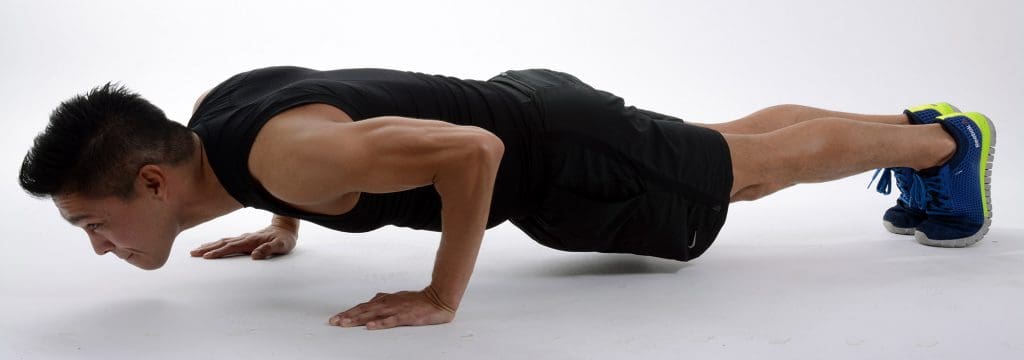What is the AMRAP technique?
AMRAP can be dual meaning – As Many Reps As Possible or As Many Rounds As Possible.
- Choose an exercise. Anything that uses a barbell – Olympic or power bar, kettlebell, air bike or dumbbell would be an excellent choice.
- Start a stopwatch or timer for some time period, if specified.
- Perform repetitions of the exercise or multiple exercises, resting as needed
- The goal is to perform as many reps as possible in the time frame specified. The final count of reps would be considered your PR (Personal Record).
It’s a strength and conditioning (muscular endurance) training technique. The goal is to perform as many repetitions (“reps”) of an exercise movement as possible, or “rounds” of multiple exercises (such as push-ups, pull-ups, and squats).
AMRAP may also specify a timeframe in which the work must be completed. AMRAP is popular in CrossFit.
Sometimes you’ll hear of “AMREP” – that’s definitely As Many Reps As Possible.

What sort of exercise should I use with AMRAP?
You can AMRAP anything. With heavier weights or larger amounts of resistance there will be more of a strength building component. With lighter weights it will significantly stress your cardiovascular system. Or you can use body-weight exercises, such as push-ups, pull-ups, squats.

How does the AMRAP technique work?
AMRAP induces the body’s basic stress adaptation response (see sidebar on Selye’s Law). When the body is stressed, it will be impacted by the stress, but will compensate afterwards, so that the stress isn’t as harmful next time. This is the basic concept of all physical training. You do some amount of work this time, push the limit a little bit, and your body will adapt to be able to handle more next time.
General Adaptation Syndrome (Selye’s Law)
Formally, Selye’s Law states that when encountering a stress (such as lifting a heavy weight repeatedly) the body will go through 3 stages: Alarm, Resistance, and then Exhaustion. But the part that is relevant for physical training is that the body has coping mechanisms and physiological changes will happen to ensure that the body adapts to the stress. That’s why you get stronger when you lift weights.
What equipment do I need for the AMRAP technique?

If a timeframe is specified, you’ll need a clock, stopwatch, or timer.
The FitAtMidlife free workout timer is a great choice for AMRAP workouts. Simply set the round length setting to the desire time frame and the rest length to 0 secs, then click Start.
Secondly, you’ll need whatever equipment your choice of exercise requires such as dumbbells, barbells, etc.

AMRAP Workout Ideas
Need some ideas for an AMRAP workout? Here’s a few you can try.
“Cindy” is one of the CrossFit staples: Complete as many rounds as possible in 20 minutes of:
- 5 pull-ups
- 10 push-ups
- 15 squats (with only your bodyweight)
In terms of AMRAP being used for As Many Reps As Possible, it can be used with any exercise involving the Olympic barbell, dumbbell, kettlebell, or anything else, really. It works with body weight exercises as well.
Why choose the AMRAP technique?
AMRAP can be challenging – because the it requires you to push your abilities. Constraining it to a timeframe ensures the pace is high, and that you limit rest periods.

When should you not use the AMRAP technique? The nature of AMRAP means the weight or resistance you are working with is going to be sub-maximal – meaning this isn’t a method to develop max-strength.
How Do I Progress the AMRAP technique?
More reps (or rounds), or more weight, or both (also known as double progression.)
All effective training methods provide a way for you to progress. Otherwise, you’re just burning calories. That might be OK depending on your goals, but the best results from exercise involve increasing your abilities via progression. That’s where real physical improvements happen.
AMRAP vs AMREP
Over time, AMRAP has been used to describe two different workouts – As many REPS as possible and as many ROUNDS as possible.
There’s a big difference.
If you are in the functional fitness or CrossFit space it’s usually clear by context clues whether AMRAP means reps or rounds.
In the traditional strength training space – AMRAP always means Reps (or repetitions), because there is no concept of “rounds.”
You’ll also occasionally hear of AMREP – this is a new way to clarify that REPETITIONS are what is being requested.
AMRAP – Go Try It!
Here’s our favorite part – go out and try it and let us know what you think. AMRAP is as old as physical exercise itself.
AMRAP Tips for Midlifers
At middle age and beyond an conservative approach to training is a good idea. Ramp up intensity slowly and carefully. Particular tips for AMRAP include:
- Avoid Failure – Training to failure simply isn’t necessary (for any trainee). You will see better results by only attempting reps you can finish completely, and properly. With AMRAP, the drive to push the limits will be there, but most trainers agree you should “leave one in the tank.” The body will adapt regardless, going all the way to failure is not a requirement, and tends to over-work your central nervous system.


Tim is the founder of FitAtMidlife.com – an avid gym rat for 30+ years, he’s a reviewer of many, many shoes – and founder of the Speed Bag Gathering – the world’s only gathering of speed bag punching enthusiasts. See more gym reviews at Tim’s YouTube channel.
